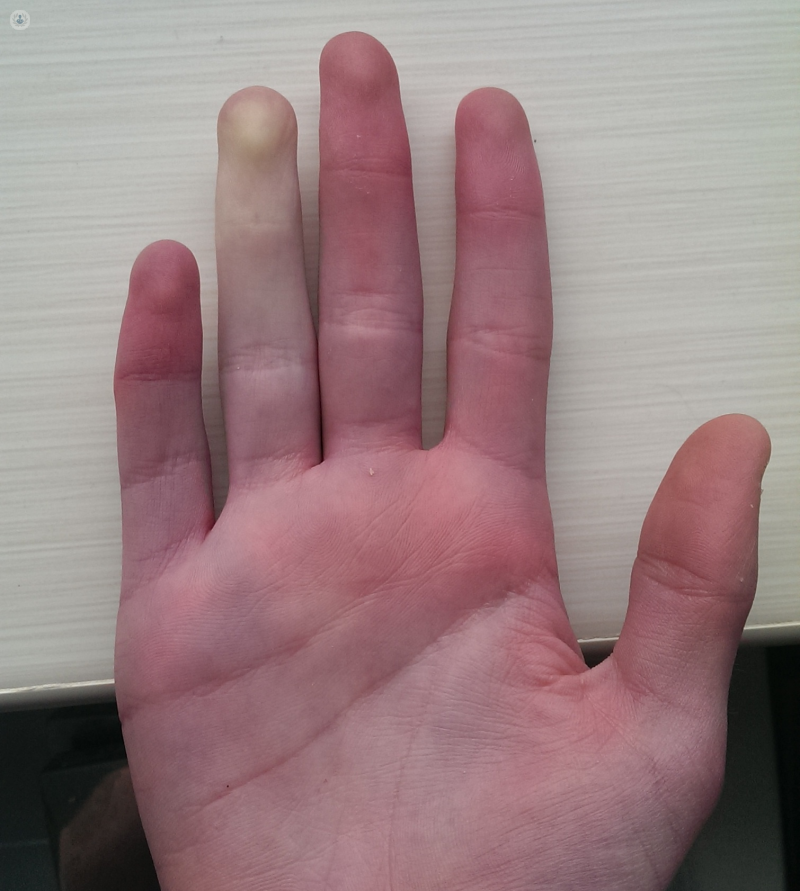

What is Raynaud’s disease?
Raynaud’s disease is a rare disorder of the blood vessels in the fingers and toes. The blood vessels narrow when a person feels cold or stressed out, which means the blood can’t get to the surface of the skin. The affected areas turn white and blue. The skin turns and red, throbs and tingles, when the blood flow returns.

What causes Raynaud’s disease?
The cause of primary Raynaud’s disease remains unknown to doctors. This strain of the disease is the most common and as it is mild, people don’t need to seek treatment. Secondary Raynaud’s disease is caused by an underlying problem, such as injuries, other diseases and some medications. The disease is more common in women, people with a family history and those over the age of 30. It is also more common in people who live in colder climates. Although the cause is not completely understood, the blood vessels in the hands and feet appear to overreact to the cold and to stress.
What are the symptoms of Raynaud’s disease?
Raynaud’s disease affects blood circulation and the symptoms may last from a few minutes to a few hours. The symptoms, which generally affect the fingers and toes, includes:
In rare cases, Raynaud’s disease could be a sign of a more serious condition, such as rheumatoid arthritis or lupus.
How is it treated?
The treatment of Raynaud’s disease may involve the medication Nifedipine, which allows the blood vessels to open. Some people may need to take this every day, whilst others only use it to prevent Raynaud’s, such as during the winter months. There are things that can be done at home too, such as:
Can Raynaud’s disease be cured?
Raynaud’s disease is generally a chronic condition, which typically worsens in the winter and eases in summer. It can start suddenly but it can also resolve spontaneously also. This occurs when a person stops smoking or stops using a medication associated with the condition.
